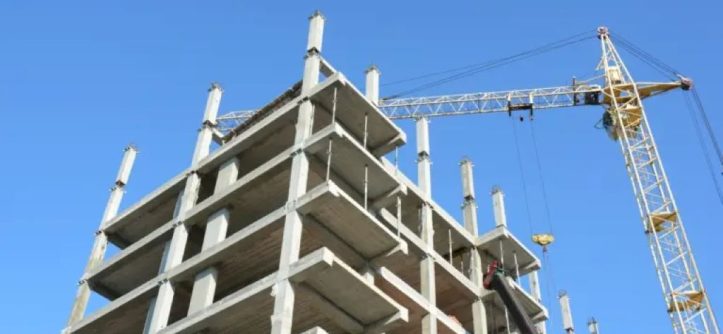Commercial construction is a dynamic field involving designing, building, and renovating structures intended for business and organizational use. From compact retail boutiques to sprawling office parks, commercial construction projects are critical to the development and growth of modern economies. If you are interested in understanding the key components, phases, and professionals involved in this industry, learning more about commercial construction can set the groundwork for future success.
Commercial construction differs significantly from residential building projects, requiring specialized skills, rigorous compliance, and meticulous planning. Understanding the essentials of this industry is essential for seamless project delivery and long-term viability for business owners, developers, and aspiring construction professionals.
Defining Commercial Construction
Commercial construction is the process of creating buildings and facilities for commercial purposes, serving uses such as offices, retail stores, manufacturing plants, warehouses, hospitals, and hospitality venues. Unlike residential projects, commercial buildings often involve larger scales, complex designs, and stringent building codes. Their focus is on business operations’ functionality, safety for employees and visitors, and long-term durability. In addition to new builds, commercial remodeling plays a vital role in updating existing structures to meet evolving business needs, modern design standards, or code requirements.
The main goal of commercial construction is to meet the operational requirements of commercial enterprises and industries while optimizing for efficiency and usability. These projects must also comply with local building laws, accessibility standards, and sustainability measures as cities and regulations evolve.
Key Phases of Commercial Construction
Planning and Development
A thorough planning and development phase is the foundation of any successful commercial project. This includes assessing business objectives, conducting feasibility studies, preparing a business plan, securing the necessary financing, and performing initial site analysis. Early decisions made during this phase impact the entire project lifecycle.
Design and Pre-Construction
During the design phase, architects and engineers collaborate to create detailed blueprints that address structural, mechanical, and aesthetic considerations. Pre-construction activities involve securing permits, finalizing project specifications, and selecting construction partners. This stage ensures all requirements are met before work begins on site.
Construction
The actual building work begins at this stage—from site preparation and laying the foundation to erecting the structure and installing essential systems such as electrical, HVAC, and plumbing. The process is overseen by general contractors, who conduct regular inspections to uphold safety, quality, and regulatory standards.
Post-Construction
Once the main building work concludes, the project undergoes a final round of inspections. Any identified issues are rectified, and project documentation is completed. The finished structure is formally handed over for use, marking the start of building occupancy and ongoing facility management.
Types of Commercial Construction Projects
- Office Buildings: Designed for businesses and organizations, these spaces support a variety of occupational needs, including collaborative workspaces and private offices.
- Retail Spaces: Built for consumer interaction, retail projects range from small shops to expansive malls tailored for sales and brand experiences.
- Industrial Facilities: These include warehouses and manufacturing sites focused on storage, logistics, and production efficiency.
- Healthcare Facilities: Hospitals, clinics, and medical centers built for patient care, treatment, and research.
- Hospitality Venues: Hotels, restaurants, and leisure venues designed to provide comfort and dining to travelers and guests.
Key Players in Commercial Construction
- Developers: Act as project initiators, securing land, arranging financing, and setting the vision for the project’s scope and use.
- Architects and Engineers: Responsible for designing the building’s structure, systems, and interior spaces while ensuring the plans conform to regulatory standards and client needs.
- General Contractors: Oversee the construction process, manage schedules, coordinate subcontractors, and ensure project delivery within deadlines and budgets.
- Subcontractors: Specialists who handle trades such as plumbing, electrical work, HVAC, and carpentry, playing essential roles in quality and progress.
Challenges in Commercial Construction
- Budget Management: Complex projects can encounter unforeseen expenses, so precise budgeting and effective contingency planning are vital to maintaining financial control.
- Regulatory Compliance: Navigating building codes, zoning requirements, and changing regulations requires careful oversight to avoid legal delays or penalties.
- Labor Shortages: A nationwide shortage of skilled tradespeople can extend timelines and escalate labor costs.
- Supply Chain Disruptions: Delays or shortages of crucial materials may stall construction progress and stress budgets.
Trends Shaping the Future of Commercial Construction
- Sustainability: Green building standards, energy-efficient materials, and waste-reduction efforts are growing priorities for modern projects.
- Technological Integration: Innovations such as Building Information Modeling (BIM), drone surveys, and collaborative cloud platforms drive efficiency and reduce errors.
- Modular Construction: Offsite prefabrication and modular systems enable faster builds with lower material waste and environmental impact.
Conclusion
Mastering the fundamentals of commercial construction is invaluable for developers, business owners, and construction professionals alike. The field demands strong planning, a collaborative approach, and an ability to navigate regulatory and logistical hurdles. By staying informed about best practices and industry trends, stakeholders can deliver high-quality, sustainable projects contributing to commercial success and community growth.






Leave a Reply